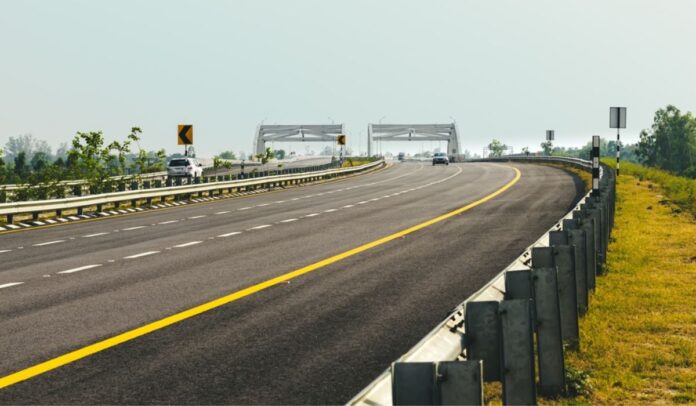1.Introduction
Uttarakhand, a scenic northern Indian state, is known for its hilly terrain, religious significance, and natural beauty. For continuous connectivity via this hilly region, National Highways in Uttarakhand play an important role. They are the backbone of road transport, integrating far-flung villages to towns and enabling people and goods movement.
Overview of National Highways in Uttarakhand
Uttarakhand National Highways are vital transportation arteries of the state, connecting the state internally and with neighboring states like Uttar Pradesh and Himachal Pradesh. The highways traverse challenging terrain, rivers, and high-altitude areas, providing access to major destinations like Haridwar, Dehradun, Rishikesh, Kedarnath, Badrinath, and Nainital. Some of these highways are also national projects like the Char Dham Highway Project that offer better infrastructure for pilgrims and tourists.
Importance for Connectivity, Trade, and Tourism
The National Highways are needed for economic growth, disaster management, and regional connectivity. They:
Enable the movement of goods from industrial centers such as Haridwar and Rudrapur.
Enhance access to tourist destinations, stimulating local enterprise and the hospitality industry.
Link pilgrimage centers, making it easier for millions of pilgrims to travel on the Char Dham Yatra.
Facilitate rapid evacuation and supply transit during natural calamities such as landslides or floods.
Briefly put, these highways enable multi-dimensional development, making Uttarakhand more accessible and resilient.
2.Total Number of National Highways in Uttarakhand
Until the latest available statistics, Uttarakhand boasts a total of 16 National Highways that span a combined distance of around 3,100 kilometers. Some of these highways are significant roads like NH-7, NH-9, NH-34, NH-109, and NH-107 that cut through the Garhwal and Kumaon regions of the state.
Current Count and Total Length (in km)
As per the Ministry of Road Transport and Highways (MoRTH) and the National Highways Authority of India (NHAI), National Highways in Uttarakhand are continuously being developed and widened. The length at present can differ slightly because of ongoing projects and new road construction under schemes such as Bharatmala and Char Dham Highway.
Official Data Source (MoRTH or NHAI)
The most authentic and latest information on National Highways comes from:
Ministry of Road Transport and Highways (MoRTH) – https://morth.nic.in
National Highways Authority of India (NHAI) – https://nhai.gov.in
These websites provide maps, project information, tenders, and current status of highway construction and maintenance in Uttarakhand and all over India.
3.Major National Highways Passing Through Uttarakhand
The state of Uttarakhand is serviced by some major National Highways connecting its towns and districts to the rest of the country. These highways not only play a vital role in daily transportation and cargo movement but also in religion and tourism travel.
NH-7 (Varanasi to Mana)
NH-7, one of the country’s longest highways as well, connects Varanasi in Uttar Pradesh with Mana village on the Indo-China border in Uttarakhand. It plays a vital role in Uttarakhand by connecting cities such as Rishikesh, Devprayag, Rudraprayag, Joshimath, and finally Mana village, which is close to the famous pilgrim Badrinath.
NH-9 (Malout to Pithoragarh)
NH-9 comes into Uttarakhand from the plains and extends to Pithoragarh in the Kumaon hills. It connects major towns such as Rudrapur, Haldwani, Almora, and Pithoragarh and acts as a lifeline for tourism and trade in eastern Uttarakhand. NH-9 is also a major tourist route to the Kumaon hill stations.
NH-34 (Haridwar to Bhadrabad)
NH-34 is a relatively short but very important road connecting Haridwar with Bhadrabad. It carries heavy local traffic, pilgrim tourists, and industrial movement, particularly for the SIDCUL industrial complex nearby. It is a feeder road connecting to longer highways to Rishikesh, Dehradun, and further.
NH-107 (Rudraprayag to Kedarnath)
NH-107 is a spiritual and strategic highway connecting Rudraprayag to Kedarnath, which is one of the Char Dham pilgrimage destinations. It is high on traffic because of its religious significance during the season of yatra. Though it is a strenuous route owing to hilly terrain and landslide zones, it is being upgraded under the Char Dham All Weather Road Project.
NH-109 (Ramnagar to Karnaprayag)
NH-109 links Ramnagar, which is well known for Jim Corbett National Park, to Karnaprayag in the Garhwal hills. The highway passes through significant towns such as Nainital, Almora, Ranikhet, and Kausani, so it is an important road for hill tourism in the state. It also serves to connect the Kumaon and Garhwal regions, facilitating inter-regional trade and travel.
These highways not only improve road infrastructure but also increase economic growth, tourism, and emergency response in the hill state. Ongoing development under national schemes are making these routes safer and more accessible throughout the year.
4.Role in Tourism and Pilgrimage
The Uttarakhand National Highways are pivotal in the development of tourism and religious pilgrimages. The state boasts the Char Dham Yatra, a very holy pilgrimage in Hinduism that consists of Kedarnath, Badrinath, Gangotri, and Yamunotri. National highways such as NH-7, NH-107, and NH-109 give straight routes to these places, radically enhancing road connectivity for pilgrims.
Additionally, the highways offer panoramic drives along the Himalayas, green valleys, and river beds, for which they are ideal for road trippers. Mussoorie, Nainital, Ranikhet, Auli, and Chopta are all well connected through these highways, promoting tourism throughout the year. Development of these highways under government programs has made travel safer, faster, and more comfortable for both national and international tourists.
5.Economic Importance
National highways in Uttarakhand are not only roads but lifelines for the economy of the state. These highways link the biggest industrial centers like Haridwar, Rudrapur, and Kashipur, which have several factories, warehouses, and SIDCUL zones.
Efficient highway networks help:
Transport raw materials and goods to and from the hills
Enable supply chains and commerce across state borders
Enhance local markets and small enterprises in out-of-the-way places through enhanced access
As a result, National Highways have a direct impact on employment generation, agricultural trade, tourism revenue, and regional development.
6.Ongoing & Upcoming Highway Projects
To augment infrastructure, both the state and central governments have initiated large-scale development projects of highways in Uttarakhand. These are:
Char Dham Highway Project
Also called the Char Dham Mahamarg Vikas Pariyojana, the ambitious project seeks to enhance road accessibility to Kedarnath, Badrinath, Gangotri, and Yamunotri. The project involves expansion of roads, development of all-weather roads, and safety features to facilitate easy pilgrimage access during adverse weather.
Bharatmala Project Roads in Uttarakhand
Strategic highway corridors are being constructed under Bharatmala Pariyojana in Uttarakhand for improving border connectivity, freight, and inter-state access. These roads are particularly important for military logistics, commerce, and hill tourism.
Tunnel and Bridge Constructions
Some suspension bridges and tunnels are being built to cut down the travel time and enhance road safety in snow-prone and landslide areas. Prominent constructions are:
Silkyara-Barkot Tunnel for Yamunotri entry
Alaknanda and Mandakini river bridges
Viaducts to skirt sharp bends and steep gradients
These upgradations in infrastructure are likely to revolutionize Uttarakhand’s transportation system, which will become stronger, quicker, and tourist-friendly.
7.Challenges in Highway Construction
It is a challenging and intricate process to build and preserve National Highways in Uttarakhand because of the state’s sensitive ecology and geography.
Mountainous Terrain and Landslides
Uttarakhand’s terrain of mountains is heavily challenging for road construction. Roads go through steep cliffs, valleys of rivers, and weak rock layers. Landslides and flash floods are common, particularly during the monsoon, that destroy roads and prolong construction schedules. The stability of the road has to be ensured using special engineering methods and landslide control systems.
Environmental Concerns and Approvals
Being part of the Himalayan landscape, a number of highway schemes have to be cleared by the Ministry of Environment and Forests. Tunneling or broadening the roads could impact forests, wildlife habitats, and watersheds, initiating stringent environmental processes and taking ages to obtain approvals.
8.Government Initiatives & Investments
In order to address these issues and increase connectivity, the Central and State Governments have initiated a number of infrastructure-based initiatives within Uttarakhand.
Infrastructure Development Plans
Major government initiatives like Char Dham All Weather Road, Bharatmala Pariyojana, and Smart Cities Mission are changing the transportation landscape of Uttarakhand. These initiatives involve road improvement, reinforcement of bridges, and enhancing the standards of road safety in hilly areas.
Budget Allocation and Progress Reports
Crores of rupees have been spent on highway construction in Uttarakhand. MoRTH (Ministry of Road Transport and Highways) and NHAI publish regular progress reports, and transparency and monitoring is maintained.
These initiatives are not only boosting tourism and commerce but also indispensable for emergency relief and regional development.
9.Travel Tips for Highway Users
Driving along National Highways in Uttarakhand is a treat for the eyes and soul—but needs planning for a hassle-free and safe trip.
Best Travel Seasons
Best seasons to drive are March–June and September–November, when weather is good and roads are comparatively better. Monsoon months (July–August) must be avoided because of high chances of landslides and road blockades.
Road Safety, Tolls, Fuel, and Rest Stops
Drive with caution on hill roads; reduce speed to low while going downhill.
Look out for road signs, hairpin turns, and rocks falling zones.
Toll plazas are operational on highways—keep cash or FASTag handy.
There are fuel pumps and resting points near towns but not in far-flung areas.
Look up road conditions and weather forecasts before embarking.
10.Conclusion
National Highways of Uttarakhand are not merely roads—they are a passport to economic growth, cultural exchange, tourism, and disaster management. As the government is channeling its focused attention with investment and road maps, the highway system is gradually becoming improved, imparting improved connectivity and access to the state.
In the future, these highways will be the key drivers of turning Uttarakhand into a contemporary, well-connected, and sustainable hill state without compromising its spiritual and natural heritage.



